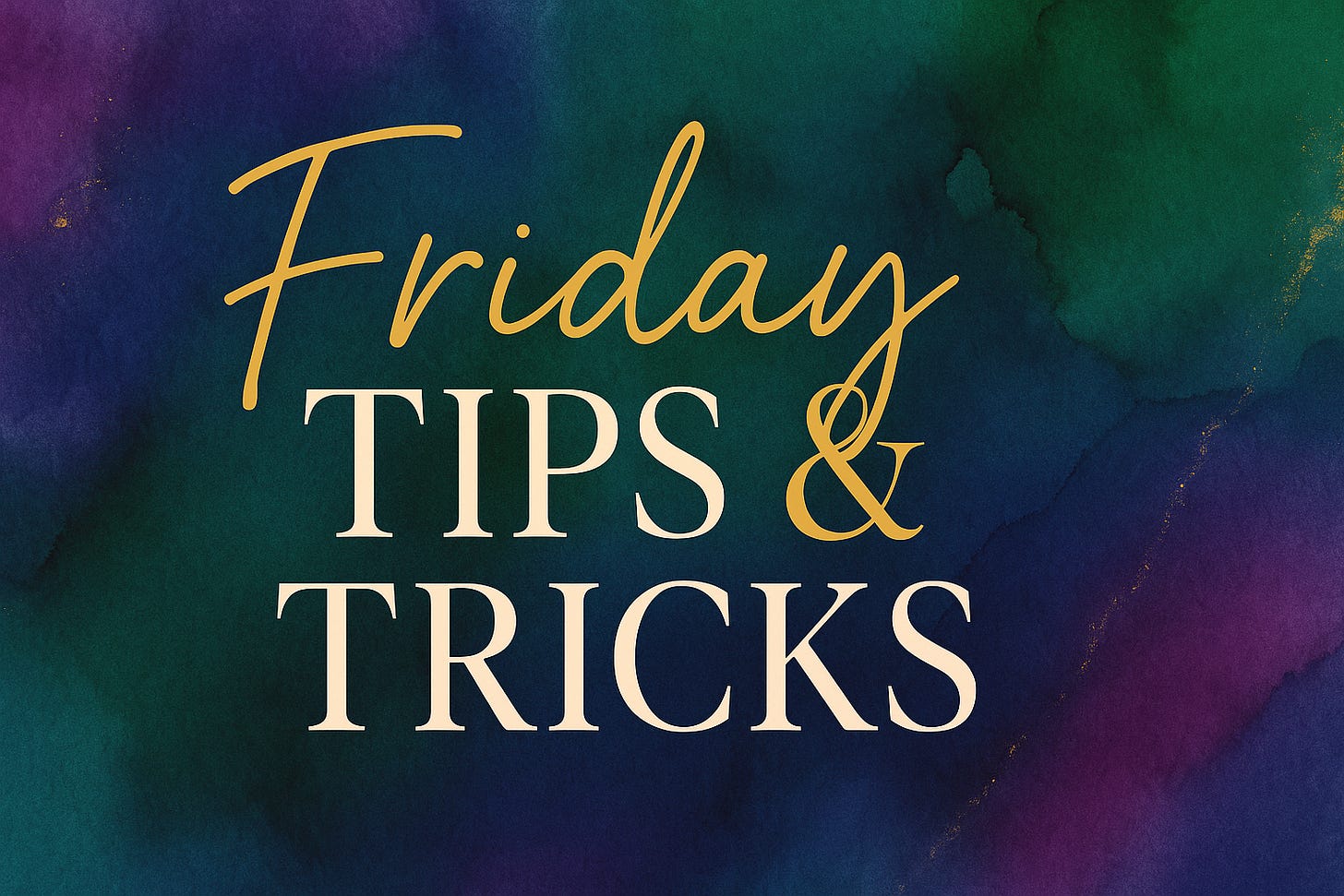🎬 Friday Tips & Tricks: Writing Like a Director
How Filmmaking Made Me a Better Novelist
When people ask how I plan my books, I usually laugh, because I don’t.
Not in the traditional sense, anyway. I don’t outline scene by scene or color-code character arcs.
I see them.
I see my stories like a movie. not just the visuals, but the pacing, the rhythm, the feeling between cuts.
That’s the filmmaker in me doing what she’s always done: directing emotion.
1. The Storyboard in My Head
When I start writing, I’m not typing , I’m storyboarding. I can see where the light hits the scene, where the camera needs to pan, and what the emotional focus should be.
In my head, I’m adjusting shots:
A close-up when the truth hurts.
A wide shot when the loneliness sets in.
A hard cut when the moment’s too sharp to linger on.
By the time I sit down to write, the scene already exists. My job is just to translate what the camera saw into language that feels alive.
2. Editing Emotion, Not Footage
Film editing taught me something that completely rewired how I write:
Don’t cut on action … cut on emotion.
If you’ve ever edited video, you know the best cuts happen when the emotional beat peaks, not necessarily when the action ends. That same rule applies to writing.
When I transition between chapters, I don’t ask, “What happens next?” I ask, “What feeling does this moment leave behind and what does it become?”
That’s why my stories can jump through time, switch POVs, or move between tension and quiet without feeling abrupt. Each beat fades into the next like scenes in a well-edited film. The emotion is the continuity.
3. Scene Composition Is Emotional Composition
Directing taught me how to control focus.
When you’re behind a camera, you’re always asking: What deserves the frame right now?
In writing, it’s the same question.
If the camera zooms in on someone’s shaking hand, I’m writing that hand until it tells me something deeper.
If the shot needs to widen, I pull back into the environment, let the silence or the lighting speak for me.
That’s how I pace intimacy and distance in prose. It’s less about description, more about cinematography. Every “frame” you write teaches the reader how to feel. Not because of what you show, but how you show it.
4. Rhythm Is Your Soundtrack
One thing I took from editing reels is rhythm. Every scene has a pulse, and if you rush it, you break the spell.
I use sentence structure like beats in a score:
Short, clipped sentences for tension.
Long, deliberate ones when emotion expands.
Quiet paragraphs when the story needs to breathe.
When you write like a director, prose becomes the soundtrack. You’re not just writing words; you’re conducting mood.
That’s what makes transitions smooth, the emotional tempo never stops playing.
5. Let the Camera Feel, Not Just See
When I’m writing an emotional scene, I don’t focus on dialogue first. I focus on the lens.
Where would the camera rest?
What would it linger on after the line is said?
Because sometimes, the silence after a confession says more than the confession itself.
As a filmmaker, I learned to trust the camera to carry subtext.
As a writer, I learned to trust the reader to feel it.
6. Directing the Reader’s Attention
Writers and directors share the same responsibility: controlling what the audience notices.
In film, it’s lighting and framing.
In writing, it’s tone and detail.
You already know how to do this instinctively if you’ve ever written a scene where a character says, “I’m fine,” but you describe their shaking fingers instead. That’s directing. You’re using the shot composition of prose to reveal the truth the dialogue hides.
7. The Takeaway
I don’t think of myself as a plotter or a pantser.
I’m a director with a script that hasn’t been filmed yet.
I build my scenes like shots.
I edit my emotions like footage.
And I trust the rhythm… that steady hum between cuts to guide the story wherever it needs to go.
That’s the real secret:
When you write like a director, you don’t just tell the story, you show the heartbeat behind it.


I appreciate these notes so much. I’m currently in school right now for Multimedia so this is hitting where it should. Thank you